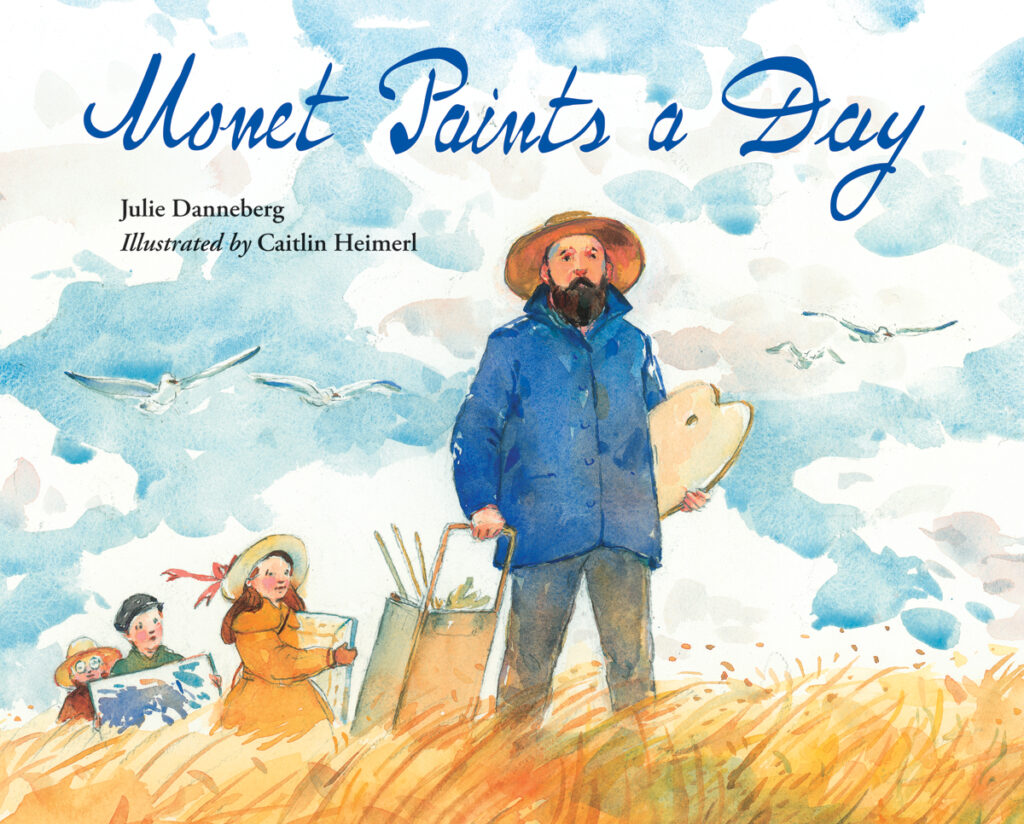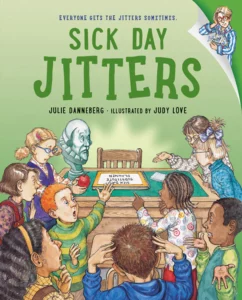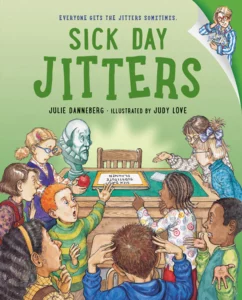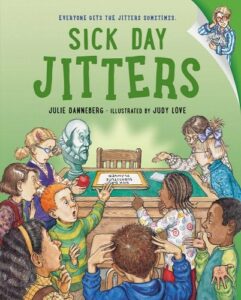
My picture book biography, Monet Paints a Day, (Charlesbridge, 2011),was written using three different kinds of nonfiction. This was done because I had so much interesting information to present but wasn’t sure what information to leave in and what to leave out. In short, I faced the decision every writer faces as they move into the drafting stage of composition: How do I present this material to best serve my purpose and my audience? Using the three types of nonfiction allowed me to do just that.
The main text is a narrative of a single dramatic event in Claude Monet’s long, productive, creative life. Painting on a beach in France and completely focused on his work, Monet didn’t notice the tide coming in until a huge wave swept him out to sea. I choose this one story because it perfectly showcased Claude Monet’s single-minded focus on his art.
The second type of nonfiction text, short sidebars, are what nonfiction author, Melissa Stewart, calls “browsable text.” ( SLJ180501-UpFront_11387349;14_View.indd (melissa-stewart.com). These facts aren’t essential to understanding the main text but do add interest as well as extend the information found there. For instance, on the page where Monet’s quick painting style is described the sidebar reads, “Monet painted at a feverish pace, feeling that he had only about 7 to 15 minutes to work on a painting before the light changed and he had to switch to another one.”
And finally, the third kind of nonfiction, traditional expository text, is found in the back matter and provides a general overview of Monet’s life and painting style for those readers who want to know more.
I am sharing this story about the creation of my Monet biography because it is important for young writers to know that when writing nonfiction, they have different kinds of nonfiction available to them, depending on their purpose.
It is also important for young readers to understand that there are different kinds of nonfiction out there and each one requires a different approach in terms of reading.
In my own classroom, two ways that I conveyed and supported this understanding for readers and writers was to first have them learn about and be exposed to the different kinds of nonfiction.
Next, I would find texts, like Monet Paints a Day, that had several types of nonfiction used in a single chapter, book or article. After these readings, students answered the following questions in their writing journal and then we discussed their answers and insights as a class.
- What were the different types of nonfiction used in this book?
- What do you think the author was trying to achieve with each type?
- Do you think the author achieved his/her purpose?
- Did you learn different types of information from the different types of nonfiction text? Explain.
- Did your reading approach change, depending on the different types of nonfiction? Explain. Think in terms of comprehension, speed of reading, type of information conveyed etc.?
Another way to have students put this understanding into practice is to have them take the same bit of information and present it in different forms of nonfiction. For instance, if they are learning about how we see color in their science class, they could present the information using a funny narrator, and they could also give the information in a straight expository style or as if they were a newspaper reporter writing an article. In each case, the information they presented and how they presented it would change.
Analyzing other people’s writing is truly, one of the main ways that writers I know grow their own writing skills. Getting students to look at nonfiction analytically, while thinking about and deciding which style is most effective for them as a learner, is a powerful way for them to grow their own reading and writing proficiency.


